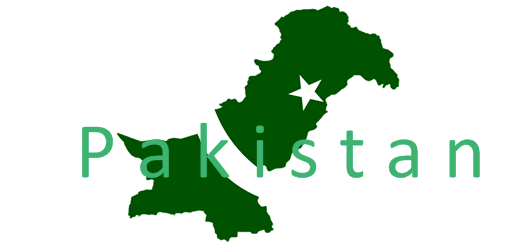The Myth of Growth: Pakistan’s Lost Opportunity – By Zee M.
The Myth of Growth:Pakistan’s Lost Opportunity
It is June 2001. The new Government is still pondering over what to do with the economy. The Pakistani Rupee is in a nosedive, and the black market in foreign exchange is booming because of capital flight. The central bank finds its reserves just enough for three weeks of essential imports. To add to the misery, the Independent Power Projects under the power policy of 1994 have all broken-even and some have started to remit 100% dividends plus arrears of their outsourced operational services to their own parent companies given the much lower tax rate. The debt servicing costs are unrelenting, and the rescheduling process commenced by the previous Government is in doldrums. A complete mess with no solution in sight.
So what does the Government do? It gets into bed with some dubious characters with ill-gotten money in Dubai to tide over the immediate crisis with a few hundred million dollars in foreign exchange swaps at unbelievably unfavorable terms. Still no permanent solution.
And then!
9/11/2001: The fear of ‘freeze’ haunts the capital merchants of Pakistan, as well as the ordinary home-remitter. The Workers remittances in the banking system jump from $ 900 million to $ 4 billion during the next year. Huge balances held abroad are transferred overnight and converted into Rupee. On top of that the debt-rescheduling comes through plus logistical support payments from the US. The central bank absorbs as much of dollars as it can and as fast as it can to keep the PKR/US$ parity unchanged but runs out of mopping up/sterilization capacity and the Rupee shoots up from 65/$ to 57/$ and the exporters are hollering murder. The orders they had booked @ Rs. 64/$ will now only get them Rs. 57/$. Export markets are being lost. In the meantime the central bank reserves are at $ 10 billion + (not including dollar deposits with commercial banks of another $ 2.8 billion), and the Government hollering “Success, see?”. Higher Rupee meant lower imported energy costs but that wasn’t the priority. Rupee was prevented to strengthen to 50/$ so the exporters could survive. Let the average domestic “bijli’ consumer go to hell.
In any country with a trade deficit, any unexpected and non-fundamental appreciation of domestic currency means a boon to be used for cheaper imports and resetting of import priorities. But in case of Pakistan, the sole reliance on exports for foreign exchange earnings held Pakistan to ransom.
2002-3: For every incoming dollar bought from the commercial banks, the central bank had to pay in Rupee. Central banks can create Rupees just with an accounting entry so coming up with the Rupee was no problem. The problem was that every Rupee the Central bank dished out into the market, it carried a return at the time of over 17% for the commercial banks while the dollars it got in return were earning less than 2%. If the central bank absorbed all that money, it would be paying 15% from its own pocket, which would eventually come from budgetary resources.
So the answer? It just left Rs. 1 trillion in the system. That lowered Rupee rates to 2% same as the dollar. So avoiding any hit on the country’s fiscal resources.
This was fine so far.
The question was what to do with that additional Rs. 1 Trillion floating around? For comparison it is important to note that this amount is the same as the entire Central Directorate of National Savings portfolio built up since 1965 consisting of Defense Savings Certificates and other regular income instruments. That is, the equivalent of the entire long-term savings of the entire nation built-up since 1965 doubled in a short time..
2003- 2005: So the Government came up with the idea of Consumer Led Growth, something on the lines of Thaksin’s Thailand; forgetting the difference in work-ethic, the captive tourism over there providing consistent revenues, as well as the population skills, demographics etc.
Still it was fine as long as the consumer demand growing due to easy money could be satisfied domestically. It couldn’t, so the foreigners had a field day setting up all sorts of assemblies with zero value addition inside the country, and raking profits back home. The money still wasn’t absorbed so the stock and real estate markets tripled. The banking sector’s profits in a single year jumped from Rs. 30 billion to Rs. 100 billion, because they could now lend retail at 14% while paying the depositors 2%. Too much liquidity meant nil competition for deposits. In the meantime inflation touched 11% +. Too much money chasing after too few goods. A classic example.
And the festive season continues. Structural adjustments were left unattended for short-term gains of the urban elite purely for the next elections in mind. The urban rich can now buy BMWs on cheap leasing. The middle class can get Toyotas and Hyundai’s. Porsche is soon coming to Pakistan. On the other hand, the price of sugar, milk, and wheat is now something to be contemplated upon. That is one less cup of tea and one less bread for whom dreams of BMWs and Mercedes are quite distant.
So what else could have been done with that Rs. 1 Trillion?
It was actually easy. A Rs 1 Trillion windfall could have been easily absorbed in the State Sector through issue of Government securities at market rates to the holders. Instead of privatizing the infrastructural assets, Pakistan could have built more State Enterprises instead of getting rid of the existing ones at throwaway prices.
Management expertise is not anymore an issue. This can easily be imported. If the domestic private sector could not absorb the surplus money, the State could.
Instead of giving the State Sector away to foreign businessmen who would slash employment for profitability alone and to remit dividends, the State could instead import the management expertise with a task to expand and to justify the manpower employed. After all, the justification for all privatization in Pakistan is that It is not the State’s job to run commercial business, but it should be kept in mind that the foreign enterprise which bought PTCL is a State Enterprise itself. So what the Pakistan Government actually is saying is that We cannot run commercial ventures, other State Enterprises can.
So why did the Pakistan Government choose this path? Were they stupid?
Not because they were stupid. It was because consumption has to grow in all the exporting countries reliant on US as the major trading partner, otherwise the entire global monetary system will collapse alongwith USA itself. The emphasis has to be on “consumption”, not on “self-reliance”.
As long as the world produces and USA consumes, the system is not sustainable. Others need to consume as well, rather than only producing. Thus, WTO enters into the picture.
For Pakistan, it’s too late to make amends.
Published with our thanks and compliments of Zee M.







![Kuch Ishq Kiya, Kuch Kaam Kiya [Ishq Aur Kaam] - Faiz Ahmed Faiz](https://www.ravimagazine.com/wp-content/uploads/2015/03/faiz-461x245.jpg)





